Forgotten Famous Georgians That Found Fame Abroad
Georgians love to describe themselves as “talented, but lazy” nation. While the majority might still be considered as lazy, waiting for something to be dropped on its head unexpectedly, many are hard-working and goal-oriented who have achieved great fame both in the country and abroad. Here’s our handpicked list of those famous Georgians and their achievements that might have been forgotten by locals.
George Coby
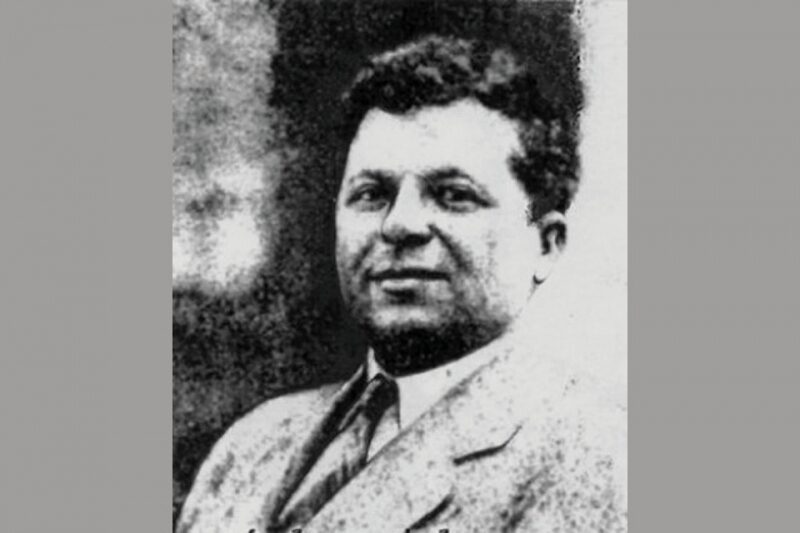
Photo Source: Forbes Georgia
George Coby or Grigol Kobakhidze gained immense success in the USA and became the first Georgian millionaire in the states. Born in 1883 in a small village of Tkhmori, he used to work in Borjomi glass factory since he turned 10 years old. His talent for invention and developing ways to significantly increase the factory’s production didn’t leave him unnoticed by the management. A German owner of the factory, Schumman, introduced him to Mikheil Mukhran-Batoni, the owner of Borjomi, after which he was soon sent to Krasnodar province in Russia to work at the Konstantinovka glass factory.
Kobakhidze later moved to Germany and Britain at the beginning of the 20th century, and by 1909 he settled in America. Here, he worked in General Electric for nine years and accumulated capital. During this time, he never abandoned his inventive habits and even patented a couple of fountain pens. This was his small business, selling pens along with other stationery. After ten years living in America, he established a large factory in Massachusetts, Coby Glass Products Company, which became one of the top industrial players of the Easter US by 1922. In just seven years, the company’s annual income equaled to today’s equivalent of more than $54 million! In addition to glass, the company produced chemical, medical, construction and 45 other types of raw materials and goods.
George Coby patented at least 60 techniques and inventions, which bought him and his company even more fame. However, he never forgot his roots and tried to help Georgia as much as he could after it became part of the Soviet Union.
His two major inventions were super-hard glass block and water-resistant concrete, which helped with the transformation of the American construction industry. Those inventions were used during the construction of Chrysler Building, the famous skyscraper of New York City. Hence, he was called the ‘King of American Chemical Industry’.
Unfortunately, he became bankrupt during the dark days of the Great Depression. However, he opened a small shop next to his house where he used to sell small glass items made by him. When the USA joined the WWII, he asked the government for financial aid to restore his business. Due to his previous achievements, he was granted two million dollars and a license. He not only rebuilt and relaunched his factories but also opened a toy shop selling Christmas decorations and soup kitchens to feed homeless. He is the author of the Christmas tree decorations like twinkling lights and electric candles. Most of his Christmas items conveyed Georgian motives such as grape leaves and grapes.
Prince Matchabelli
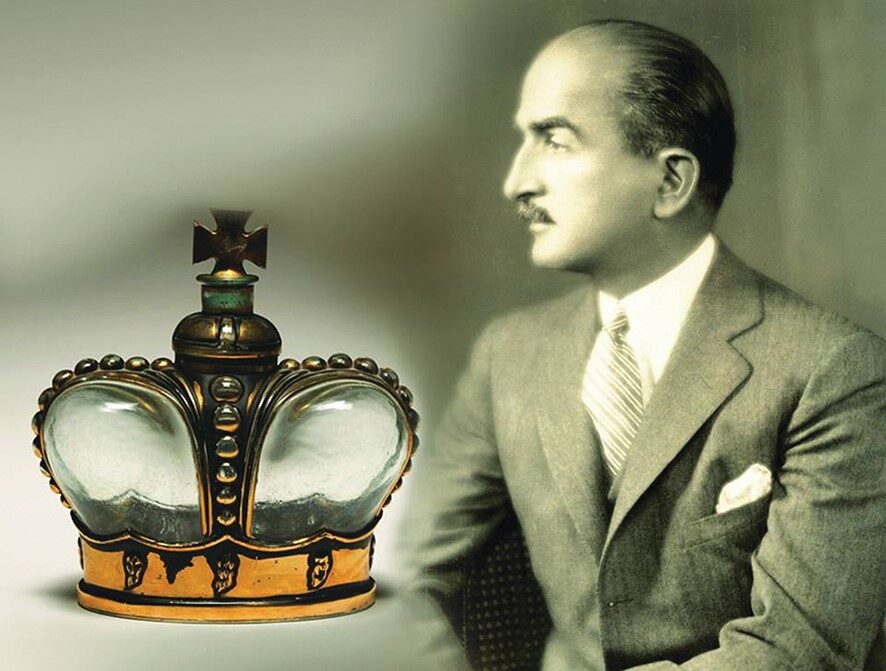
Photo Source: Georgia Today
Prince Georges Vasili Matchabelli was an amateur chemist who designed a perfume line called Prince Matchabelli. He was a Georgian ambassador to Italy and a nobleman who had to flee the country after Russia annexed Georgia in 1921. He immigrated in the United States with his wife and opened a small antique shop in New York City, called Le Rouge et le Noir. In 1926, they established Prince Matchabelli Perfume Company, where he personally blended perfumes for his clients. It should be noted that the glass flasks of those perfumes were made by George Coby. At first, Prince Matchabelli had three different types of perfumes, Princess Norina (called after his wife), Queen of Georgia, and Ave Maria. They became very famous due to crown-shaped bottles designed after the family crown.
In the middle of 1930s, Princess Matchabelli sold the company to Saul Ganz, a perfume manufacturer. Since then, the company was sold many times and today they are owned by Parfums de Coeur.
Alexander Kartveli

Photo Source: Georgian Journal
Aleksandre Kartvelishvili or Alexander Kartveli was an authoritative aircraft engineer, who became a pioneer in American aviation history. He achieved important achievements in military aviation and is considered to be one of the most innovative and significant aircraft architects both in the U.S. and the world.
Born in Tbilisi in a nobleman family, he later moved to France as one of many aviation engineer applicants of Georgian origin. After graduating from the Highest School of Aviation in Paris, he started working as a test pilot. Unfortunately, he was injured during one of the test flights, which ended his career. Afterward, he worked for Louis Bleriot company and created the Bernard and Ferbois aircraft. One of this creations established a world speed record in 1924.
An American millionaire Charles Levine has invited him to New York in 1927 and asked to join the Atlantic Aircraft Corporation. In 1931, Kartveli met Alexander de Seversky, a prominent engineer, where he was given a position of chief engineer at Seversky Aircraft Corporation.
They both worked on creating new designs and during the WWII, their scatches turned into P-47, one of the most effective American fighter aircraft.
George Balanchine
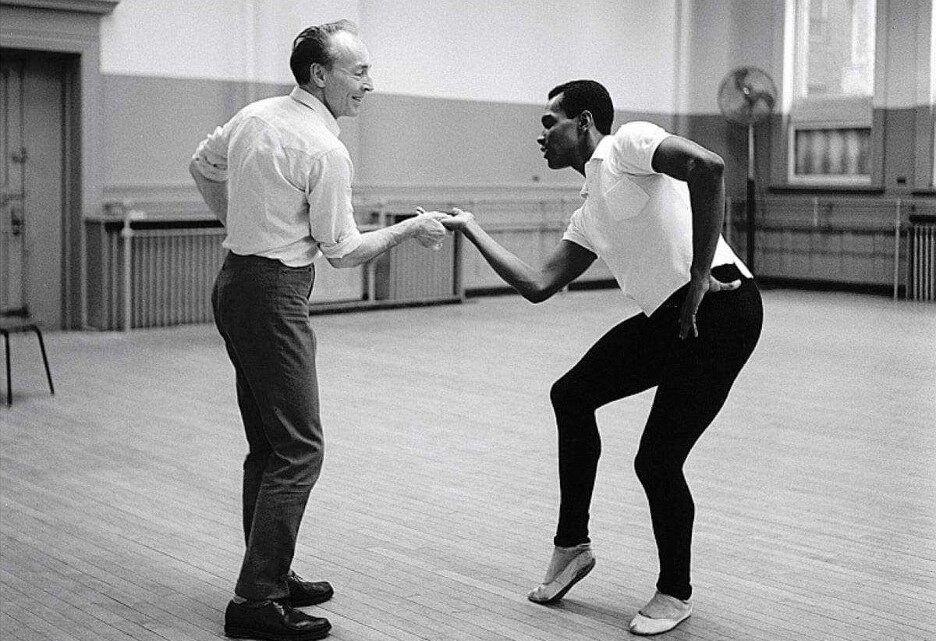
Photo Source: Embassy of Georgia
George Balanchine was a choreographer, who is considered to be the father of American ballet due to the fact that he co-founded the New York City Ballet and directed it for more than 35 years.
He took the techniques and standards he learned at the Imperial Ballet School and mixed them with different schools of movement he adopted in Hollywood and on Broadway. He created his signature ‘neoclassical style’ in the ballet.
George was born in St. Petersburg and was the son of Georgian opera composer and singer Meliton Balanchivadze, one of the patrons of Tbilisi State Opera and Ballet Theater.
Balanchine premiered Apollon Musagete (Apollo and the muses) in Paris in 1928 in collaboration with composer Igor Stravinsky, which was one of the most innovative ballets of that time, mixing classical ballet and Greek myths with jazz movement. Apollo brought the male dancer in focus, giving him two solos. Additionally, the simple costumes and sets were created deliberately in order not to distract the audience from the movement. Balanchine believed that music has the primary influence on choreography, as opposed to the narrative.
Gurian Horseriders
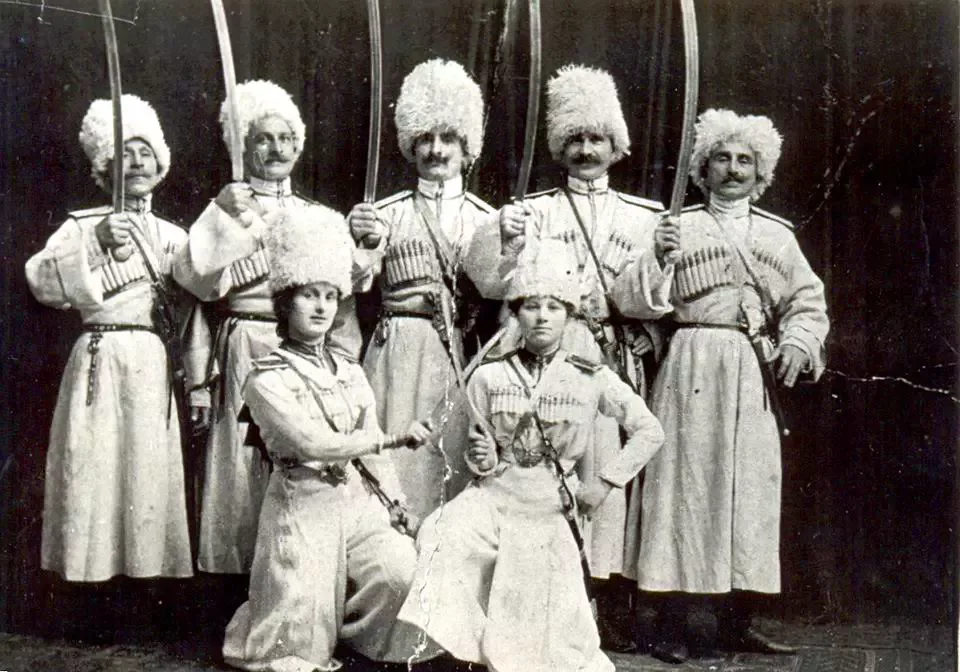
Photo Source: Georgia Travel
Horseriders from Guria probably were the first ones who brought fame to the Georgian nation at the end of the 19th century. Back then no one knew what Georgia was, therefore they were known as Russian Cossacks and were the main highlight of Buffalo Bills Wild West Shows. Their show featured folk dances and trick riding, which evidently influenced cowboys in the United States.
The story of Georgian horse riders starts in 1892 when they joined Buffalo Bill’s show in England under the leadership of Prince Ivan Makharadze. Afterward, they moved to the USA where they performed for more than 30 years. Their shows were unusual since all of them were dressed in national costumes, chockha, and rode horses while singing and carrying weapons. First, they marched around the arena, stopped in the mid-stage and aligned. Then, they started a new song and perform one of the native dances accompanied with handclaps, which was later followed with stunt riding. This stunt riding featured standing straight in the saddle, riding three horses at once, jumping on the ground and back up on the horse, or picking small items from the floor to name a few.
Vasil Dumbadze
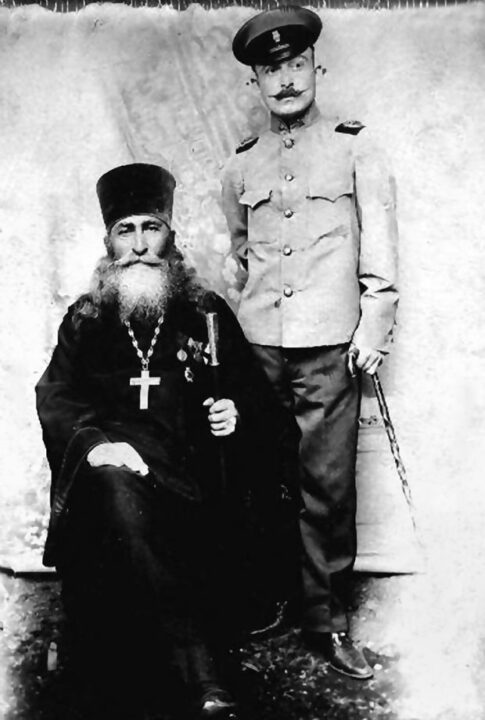
The person standing is Vasil Dumbadze | Photo Source: mematiane.ge
Dumbadze was a Georgian nobleman and financier, known for his avant-garde, scandalous game with the Military Ministry of Russian Empire and secret diplomatic activities.
Born in Guria in the family of the priest, he left Georgia in 1897 to continue his studies in Germany. He wrote many essays, including Georgians – ethnographic analysis, and Oil industry in the Caucasus. After graduating from the Faculty of Engineering at the University of Leipzig, his thesis served as a guidebook in Baku’s oil industry. The work of his student period also is the Plan of Exploitation of Dnepr’s Choros and the Petrograd Sewer Plan in Vorontsov Homes.
After returning to Georgia, he became close to the family Ilarion Vorontsov-Dakakov, who was the governor of the Caucasus, through whom he got acquainted with the bourgeoisie of St. Peterburg and Russian Ambassador to the US Bakhmatiev. Later on, Dumbadze was part of the establishment of Morgan’s Russian-American Bank. Along with Giorgi Machabeli, Giorgi Sharvashidze and other Georgian noblemen, he tried to resolve the issue of autonomy of Georgia in the Russian Empire.
Since 1924 he lived in America and a year later, he published his very first book in English called The Republics of the Caucasus, in which he attempted to gain the attention of American government to the Caucasus, and especially to Georgia. In 1926, the emigrant government of Georgia appointed him as a Consular of Georgia to the United States of America, due to the fact that America considered Georgia as a voluntary part of the Russian Empire and not as the occupied country. Together with Senator Henry Wilson, he founded the American Society for the Caucasus.
Mike Mito (Dimitri Metreveli)
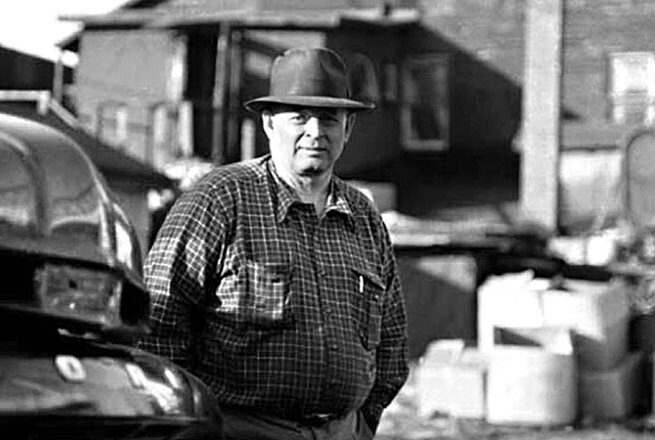
Photo Source: Speech
Born in 1895 in the Racha region, he studied carpentry at the age of 8, while local priest taught him how to read and write. In 1913 he followed a group of Georgians to America. Later he moved to Canada and settled in a small town near Quebec. After working in different places and frequently changing the profession, he started to seek for gold. Unlike many others, he got lucky and found the source for the treasure. Soon he opened the first mine, followed by many others.
Dimitri was not satisfied with Canadian mines and decided to expand his territory and traveled to Alaska in search of gold. He again found the source. During his life, he helped not only Georgians, but Americans, Ukrainians, and Scandinavians to name a few. He also sent financial aid to his family and relatives living in Georgia, but he never returned home.
During the Great Depression, similar to Coby, he lost his assets and his mines both in Canada and Alaska were abandoned. He still managed to save his business but lost his position of being a millionaire.
In 1945, together with his American partner he discovered a diamond source in Toronto and constructed diamond mine.
We created Memo — a brand where Georgian memories come to life.
Visit Memo By GSH and take a piece of Georgia with you – Www.memories.ge







